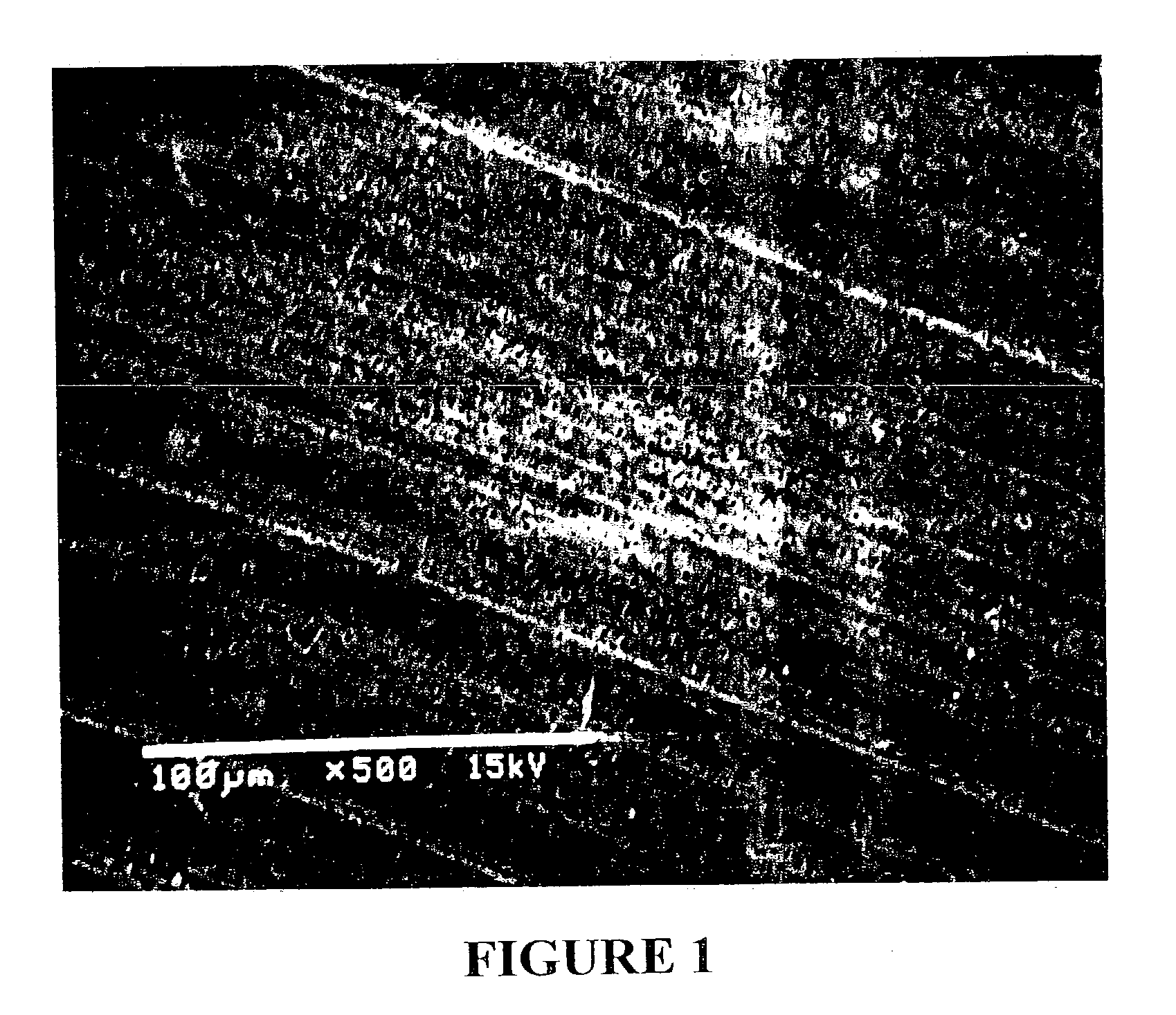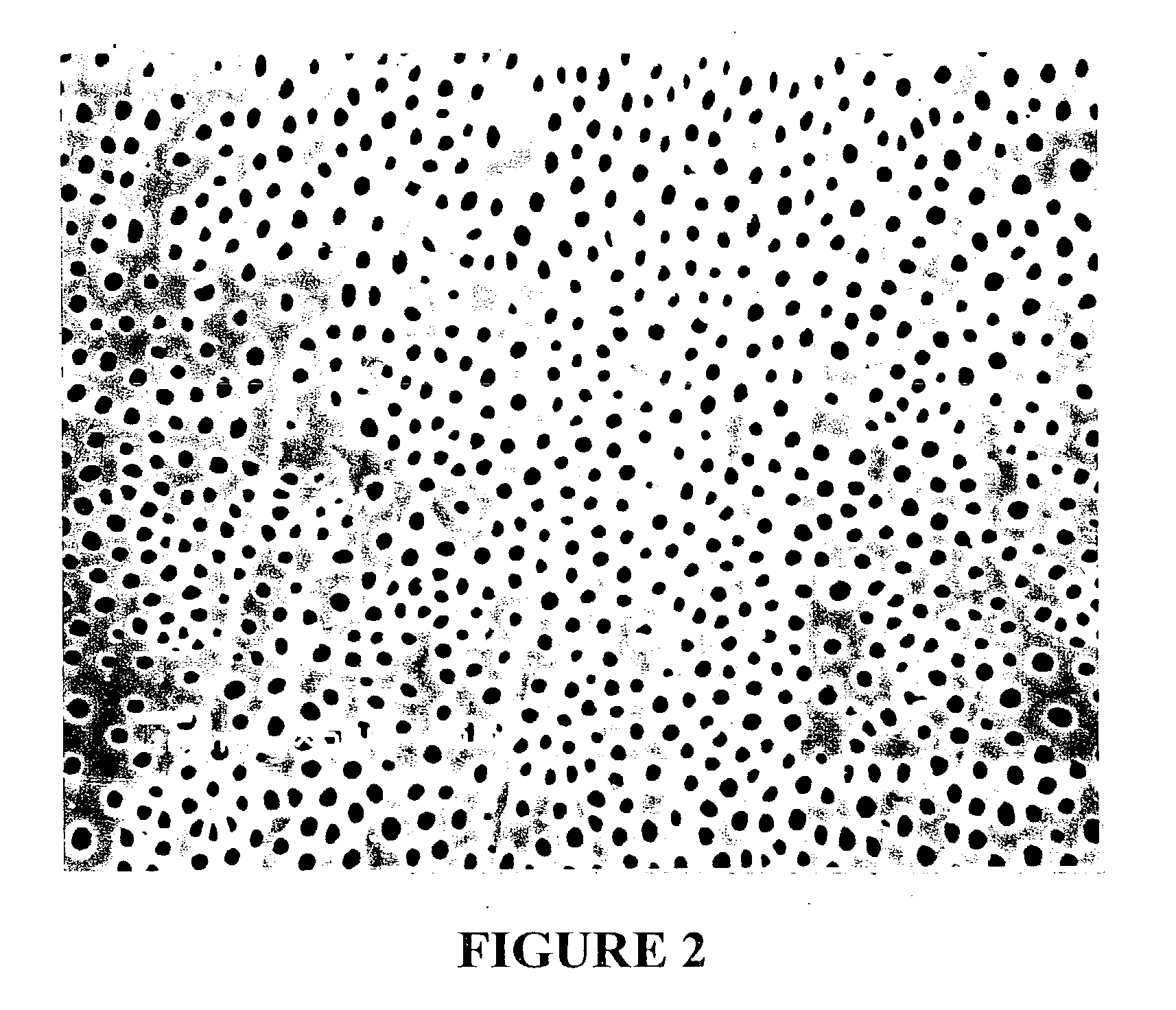Method of etching and priming a tooth
a tooth and tooth technology, applied in the field of tooth priming and etching, can solve the problems of increasing operating time and complexity, prolonging the restoration time, and reducing tooth sensitivity
- Summary
- Abstract
- Description
- Claims
- Application Information
AI Technical Summary
Benefits of technology
Problems solved by technology
Method used
Image
Examples
Embodiment Construction
[0031] Etchant solutions of the invention comprising an aqueous solution of 2.2% AMPS resin and 1% glutaraldehyde were applied to the tooth surface for twenty seconds and gently air-dried for two seconds. Bonding agents were applied using the same procedure as that in U.S. Pat. No. 6,147,137, which is hereby incorporated by reference. Comparative examples were conducted using 37% H.sub.3PO.sub.4 gel, which was applied to the tooth surface for twenty seconds, and thereafter flushed with copious amounts of water for 10 seconds. The surfaces were gently air dried and the bonding agents were applied. Table 1 below sets forth the examples. As shown, the self-etching compositions of the invention show the same or better bonding results, but using less steps in the application of the etchant to the tooth surface.
1TABLE 1 Bonding Bonding Adhesive to Comparative to Comparative Brand Dentin Examples Enamel Examples (Lot (MPa) 37% (MPa) 37% Number) Self-Etch* H.sub.3PO.sub.4 gel Self-Etch* H.s...
PUM
| Property | Measurement | Unit |
|---|---|---|
| weight percent | aaaaa | aaaaa |
| time | aaaaa | aaaaa |
| time | aaaaa | aaaaa |
Abstract
Description
Claims
Application Information
 Login to View More
Login to View More - R&D
- Intellectual Property
- Life Sciences
- Materials
- Tech Scout
- Unparalleled Data Quality
- Higher Quality Content
- 60% Fewer Hallucinations
Browse by: Latest US Patents, China's latest patents, Technical Efficacy Thesaurus, Application Domain, Technology Topic, Popular Technical Reports.
© 2025 PatSnap. All rights reserved.Legal|Privacy policy|Modern Slavery Act Transparency Statement|Sitemap|About US| Contact US: help@patsnap.com



